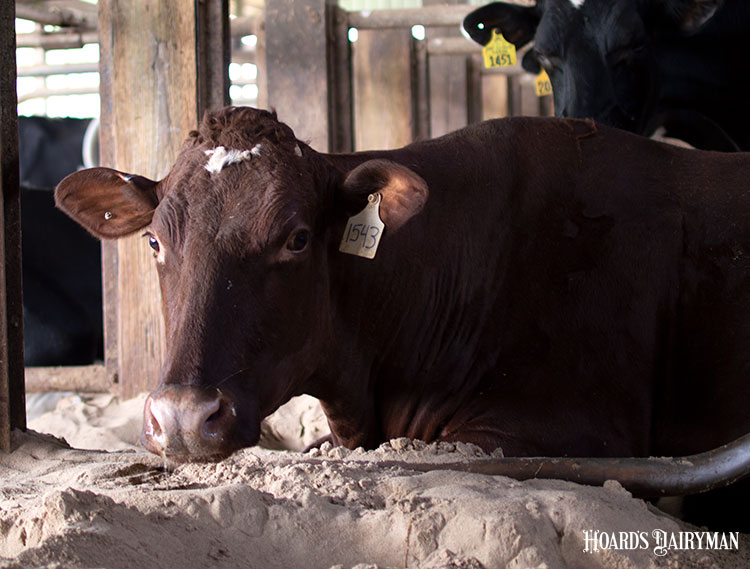
The concept of a brisket locator emerged as freestall housing grew in popularity for dairy cows. The traditional “brisket board” was, quite literally, a wooden board placed near the front end of a stall to help position cows when they are lying down. Today, brisket locators can be made of wood, concrete, PVC pipes, and other materials.
There are farms that have chosen to forgo the use of brisket locators altogether. That may lead some to wonder if this stall feature still has a place in today’s dairy barns.
Dan McFarland, an agricultural engineer at Penn State University, addressed this topic in a recent Penn State Extension article. His answer to the question of whether or not brisket locators are necessary is, “It depends.”
McFarland explained that properly positioned brisket locators can help improve stall cleanliness by preventing cows from lying too far forward and defecating in the back of the stall. However, if the placement leads to reduced resting space, other problems can emerge, such as a reluctance to use the stalls, cows lying in stalls diagonally, and more rear hock injuries.
McFarland wrote that the current recommendation for brisket locators is a maximum height of 4 inches above the resting surface in stalls with mats or mattresses. In deep-bedded stalls, the top of the brisket locator should be no higher than 4 inches above the top of the rear curb.
As for placement, brisket locators should be positioned to fit the biggest cows in the group. McFarland said the resting space recommendation for large-framed cows is 68 to 72 inches. This should be measured from the cow side of the brisket locator to the end of the cushion at the rear of the stall.
He said to also consider the surface elevation in front of the brisket locator. “As cows rise, they typically place one foot forward,” he explained. “The brisket locator should not be an obstacle to this motion, and the surface just beyond needs to have a similar elevation to the resting surface and offer good footing as well.”
Rest trumps raking
Between the amount of dry matter consumed and the amount of time cows spend lying down (ideally, 10 to 14 hours per day), McFarland said that some manure is likely to land in the stalls. He believes extra resting time and fewer injuries due to well-designed stalls outweighs the time spent grooming stalls more often to keep them clean.
“Properly sized, shaped, and positioned brisket locators can provide ample resting space and discourage forward movement while resting,” he wrote. “Improperly sized, shaped, or positioned locators result in an uncomfortable resting space, diagonal resting, an obstacle to rising, and possible injury.”
He reiterated that brisket locators serve their purpose when done well, but he pointed out that farms that have gone without have noticed minimal issues. He also indicated that in situations where farms find cows have too much resting space, brisket locators can usually be added without too much difficulty.








